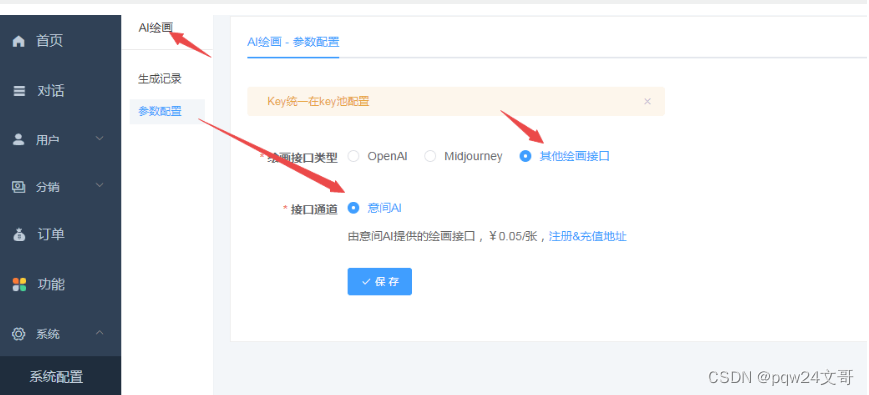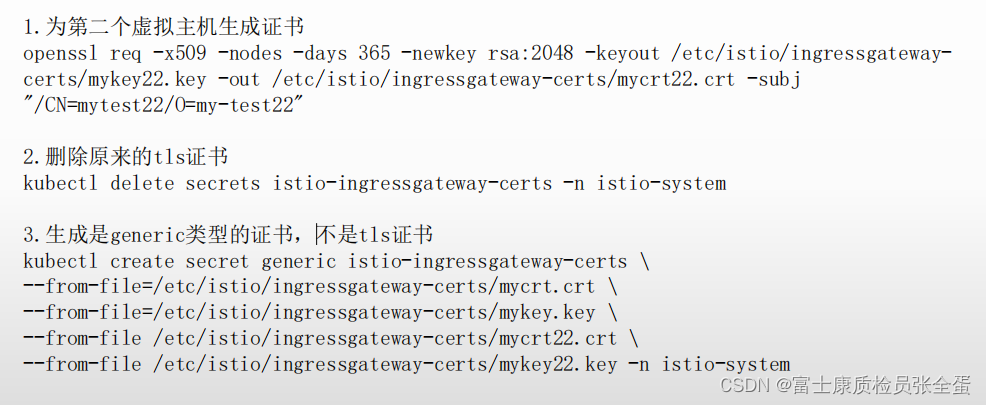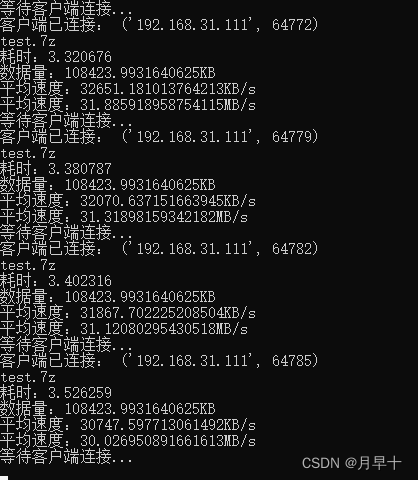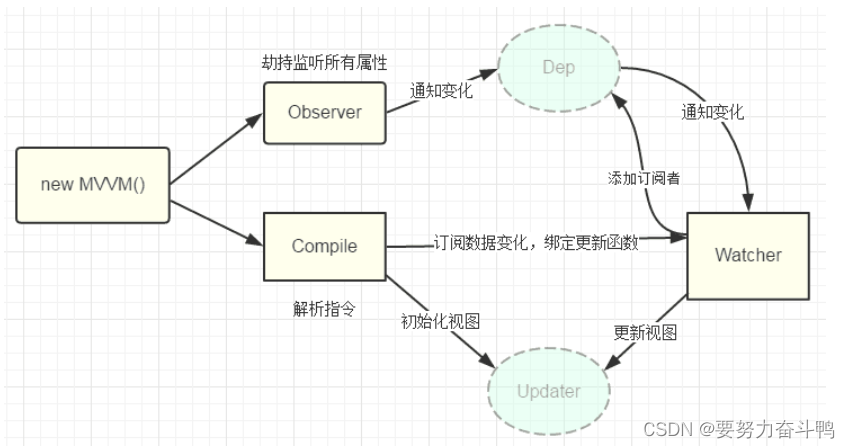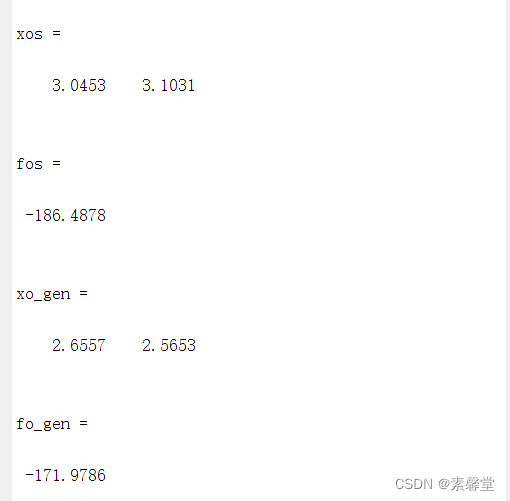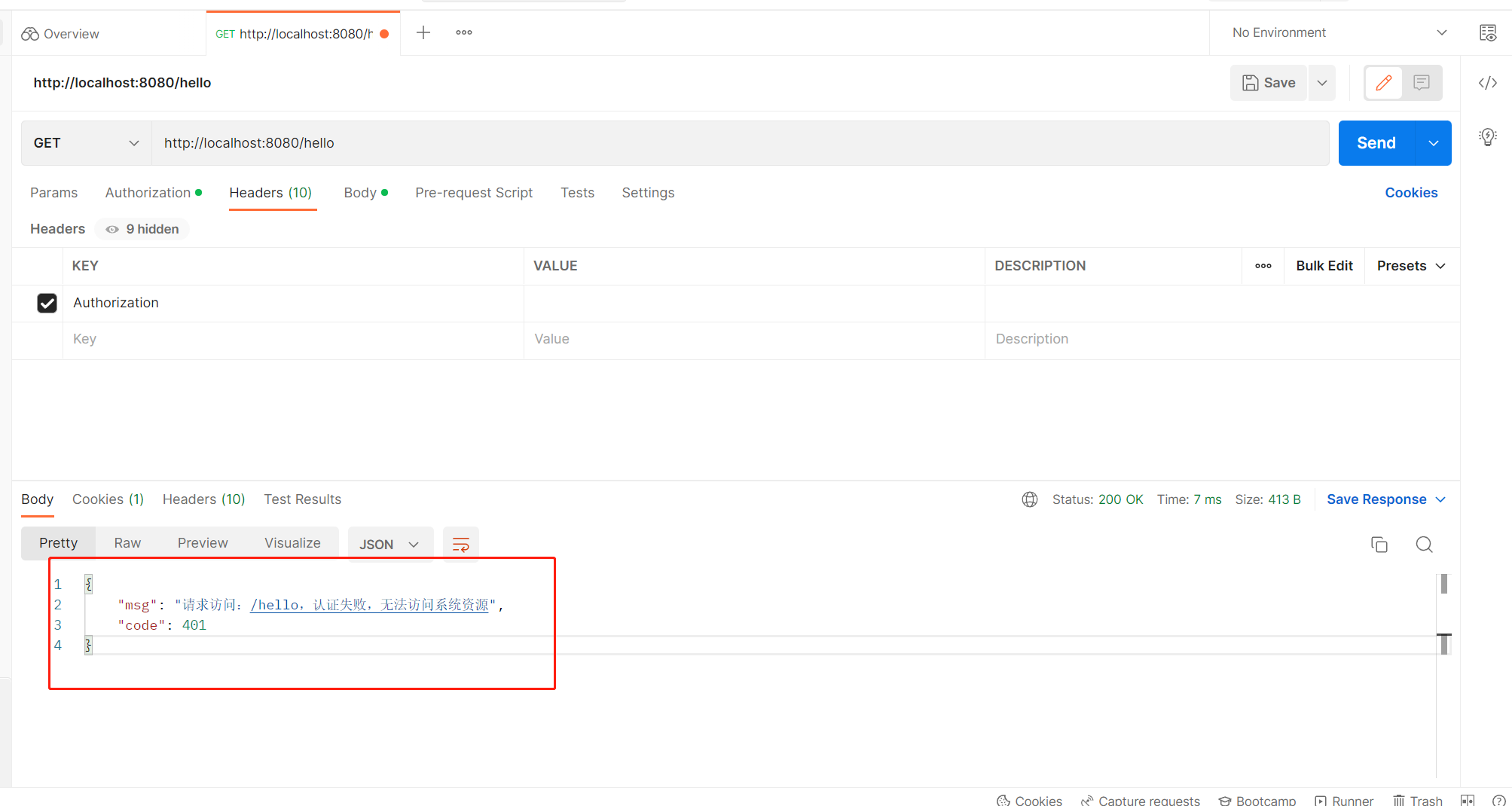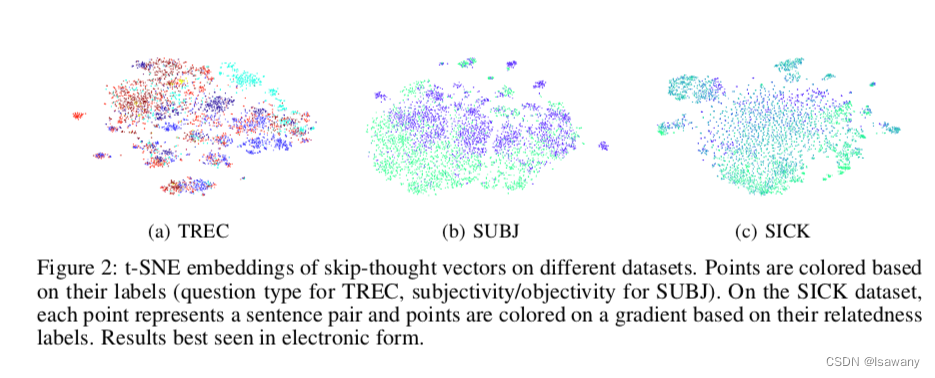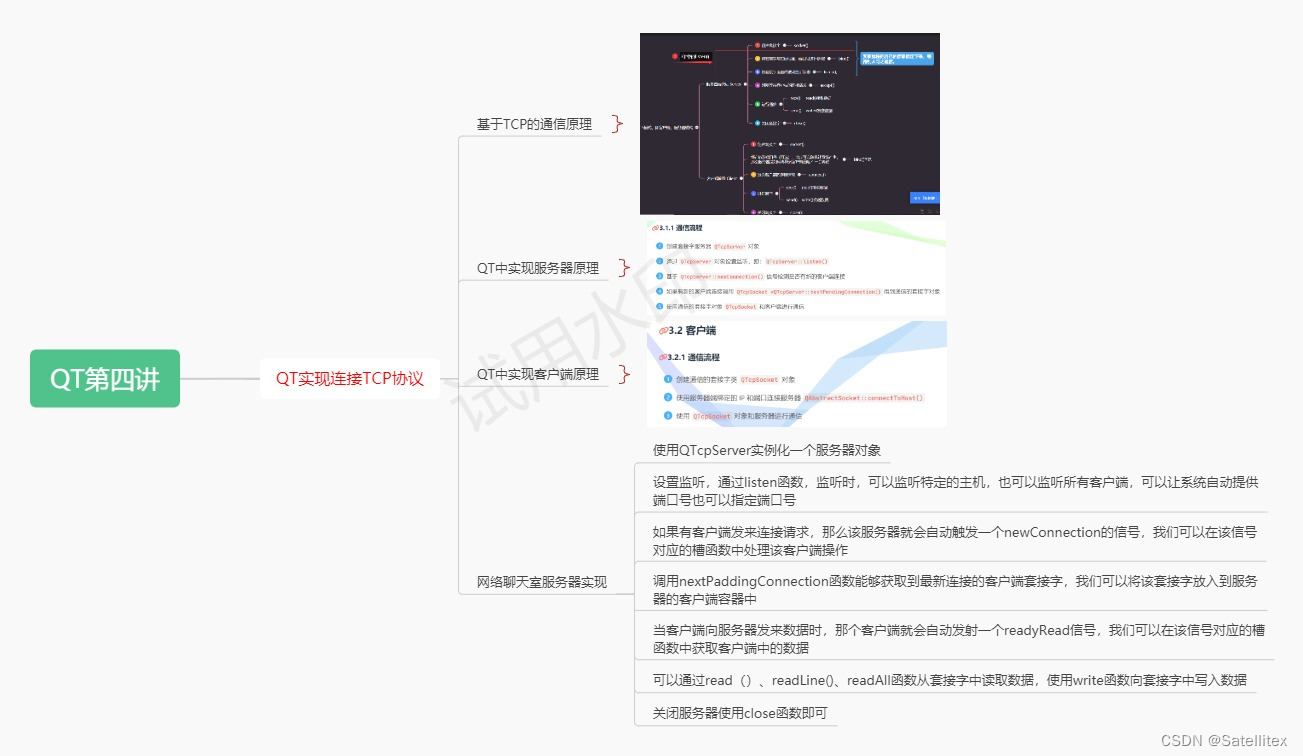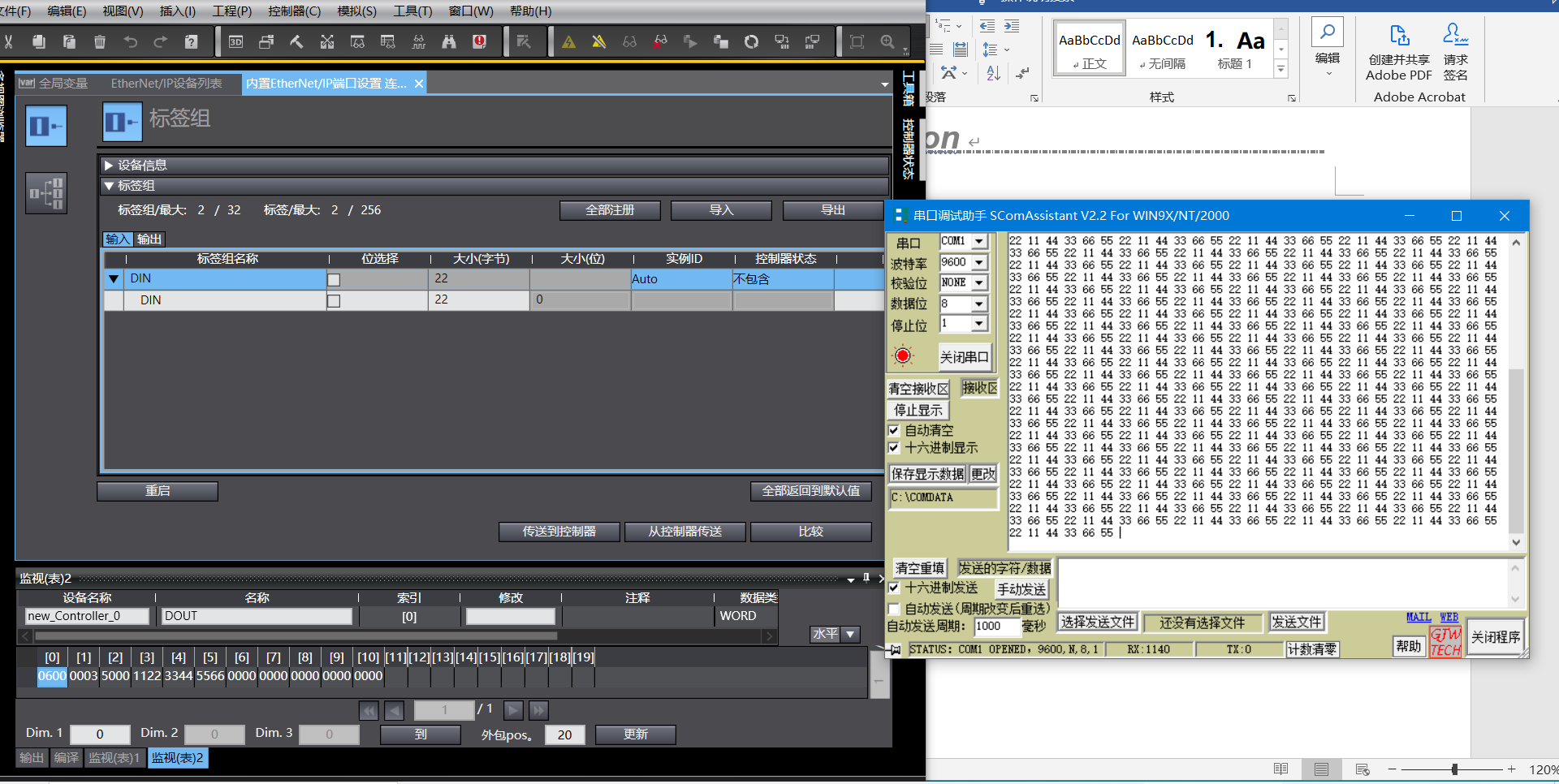1.抛一个问题
这一天,法海想锻炼小青的定力,由于Bitmap也是一个Parcelable类型的数据,法海想通过Intent给小青传个特别大的图片
intent.putExtra("myBitmap",fhBitmap)
如果“法海”(Activity)使用Intent去传递一个大的Bitmap给“小青”(Activity),如果你的图片够大,会出现类似下面这样的错误,请继续往下看:
Caused by: android.os.TransactionTooLargeException: data parcel size 8294952 bytes
at android.os.BinderProxy.transactNative(Native Method)
at android.os.BinderProxy.transact(BinderProxy.java:535)
at android.app.IActivityTaskManager$Stub$Proxy.startActivity(IActivityTaskManager.java:3904)
at android.app.Instrumentation.execStartActivity(Instrumentation.java:1738)
至于是什么样的大图,这个只有法海知道了(小青:好羞涩啊)🙈🙈🙈

所以TransactionTooLargeException这玩意爆出来的地方在哪呢?
2.问题定位分析
我们可以看到错误的日志信息里面看到调用了BinderProxy.transactNative,这个transactNative是一个native方法
//android.os.BinderProxy
/**
* Native implementation of transact() for proxies
*/
public native boolean transactNative(int code, Parcel data, Parcel reply,
int flags) throws RemoteException;
在Android Code Search,全局搜索一下:android_os_BinderProxy_transact
//frameworks/base/core/jni/android_util_Binder.cpp
static jboolean android_os_BinderProxy_transact(JNIEnv* env, jobject obj,
jint code, jobject dataObj, jobject replyObj, jint flags) // throws RemoteException
{
......
status_t err = target->transact(code, *data, reply, flags);
......
if (err == NO_ERROR) {
//如果匹配成功直接拦截不往下面执行了
return JNI_TRUE;
} else if (err == UNKNOWN_TRANSACTION) {
return JNI_FALSE;
}
signalExceptionForError(env, obj, err, true /*canThrowRemoteException*/, data->dataSize());
return JNI_FALSE;
}
我们打开signalExceptionForError方法看看里面的内容
//frameworks/base/core/jni/android_util_Binder.cpp
//处理异常的方法
void signalExceptionForError(JNIEnv* env, jobject obj, status_t err,
bool canThrowRemoteException, int parcelSize)
{
switch (err) {
//其他异常,大家可以自行阅读了解;
//如:没有权限异常,文件太大,错误的文件描述符,等等;
........
case FAILED_TRANSACTION: {
const char* exceptionToThrow;
char msg[128];
//官方在FIXME中写道:事务过大是FAILED_TRANSACTION最常见的原因
//但它不是唯一的原因,Binder驱动可以返回 BR_FAILED_REPLY
//也有其他原因可能是:事务格式不正确,文件描述符FD已经被关闭等等
//parcelSize大于200K就会报错,canThrowRemoteException传递进来的是true
if (canThrowRemoteException && parcelSize > 200*1024) {
// bona fide large payload
exceptionToThrow = "android/os/TransactionTooLargeException";
snprintf(msg, sizeof(msg)-1, "data parcel size %d bytes", parcelSize);
} else {
..........
}
//使用指定的类和消息内容抛出异常
jniThrowException(env, exceptionToThrow, msg);
} break;
........
}
}
此时我们看到: parcelSize大于200K就会报错,难道一定是200K以内?先别着急着下结论,继续往下看👇👇
3.提出疑问
法海:我有个疑问,我看到文档写的1M大小啊;
许仙:别急,妹夫,来先看一下文档的解释,看一下使用说明:
官方TransactionTooLargeException的文档中描述到:Binder 事务缓冲区有一个有限的固定大小,目前为 1MB,由进程所有正在进行的事务共享
可以看到写的是:共享事务的缓冲区
如来佛祖:汝等别急,我们简单测试一下,Intent传递201*1024个字节数组,我们发现可以正常传递过去,Logcat仅仅输出了一个Error提示的日志信息,还是可以正常传递的
E/ActivityTaskManager: Transaction too large, intent: Intent { cmp=com.melody.test/.SecondActivity (has extras) }, extras size: 205848, icicle size: 0
我们再测试一个值,intent传递800*1024个字节数组,我们发现会崩溃
android.os.TransactionTooLargeException: data parcel size 821976 bytes
at android.os.BinderProxy.transactNative(Native Method)
at android.os.BinderProxy.transact(BinderProxy.java:540)
at android.app.IApplicationThread$Stub$Proxy.scheduleTransaction(IApplicationThread.java:2504)
at android.app.servertransaction.ClientTransaction.schedule(ClientTransaction.java:136)
不要着急,我们继续往下看分析
4.解答疑问
我们来看一下,下面两行代码
//frameworks/base/core/jni/android_util_Binder.cpp
//这个方法android_os_BinderProxy_transact里面的
IBinder* target = getBPNativeData(env, obj)->mObject.get();
status_t err = target->transact(code, *data, reply, flags);
从上面的分析和测试结果,我们从target->transact这里来找err返回值, 先根据头文件,搜索对应的cpp类,我们看一下这几个cpp类:BpBinder.cpp、 IPCThreadState.cpp、ProcessState.cpp
//frameworks/native/libs/binder/ProcessState.cpp
// (1 * 1024 * 1024) - (4096 *2)
#define BINDER_VM_SIZE ((1 * 1024 * 1024) - sysconf(_SC_PAGE_SIZE) * 2)
#define DEFAULT_MAX_BINDER_THREADS 15
//下面两个注释
//引用自官方文档:https://source.android.google.cn/devices/architecture/hidl/binder-ipc
#ifdef __ANDROID_VNDK__
//供应商/供应商进程之间的IPC,使用 AIDL 接口
const char* kDefaultDriver = "/dev/vndbinder";
#else
// "/dev/binder" 设备节点成为框架进程的专有节点
const char* kDefaultDriver = "/dev/binder";
#endif
//构造函数:初始化一些变量,Binder最大线程数等
ProcessState::ProcessState(const char* driver)
: mDriverName(String8(driver)),
mDriverFD(-1),
mVMStart(MAP_FAILED),
......
mMaxThreads(DEFAULT_MAX_BINDER_THREADS),
mStarvationStartTimeMs(0),
mThreadPoolStarted(false),
mThreadPoolSeq(1),
mCallRestriction(CallRestriction::NONE) {
......
//打开驱动
base::Result<int> opened = open_driver(driver);
if (opened.ok()) {
//映射(1M-8k)的mmap空间
mVMStart = mmap(nullptr, BINDER_VM_SIZE, PROT_READ, MAP_PRIVATE | MAP_NORESERVE,
opened.value(), 0);
......
}
......
}
点击查看sysconf.cpp
getauxval(AT_PAGESZ) = 4096,可以得出Binder内存限制,BINDER_VM_SIZE = 1M-8kb
这里为什么不是1M,而是1M-8K?
最开始的时候,官方写的是1M,后来他们内部自己优化了;
来看这里👉👉官方提交的ProcessState.cpp提交的log日志:允许内核更有效地利用其虚拟地址空间
我们知道:微信的MMKV、美团的Logan的日志组件,都是基于mmap来实现的;
binder驱动的注册逻辑在Binder.c中,我们看一下binder_mmap方法
//kernel/msm/drivers/android/binder.c
static int binder_mmap(struct file *filp, struct vm_area_struct *vma)
{
int ret;
struct binder_proc *proc = filp->private_data;
const char *failure_string;
if (proc->tsk != current->group_leader)
return -EINVAL;
//这里可以看到:映射空间最多4M
if ((vma->vm_end - vma->vm_start) > SZ_4M)
vma->vm_end = vma->vm_start + SZ_4M;
......
//初始化指定的空间vma用于分配绑定缓冲区
ret = binder_alloc_mmap_handler(&proc->alloc, vma);
......
}
这里能看到映射空间最多4M,我们再来看一下binder_alloc_mmap_handler这个方法,点击查看binder_alloc.c
//kernel/msm/drivers/android/binder_alloc.c
//由binder_mmap()调用来初始化指定的空间vma用于分配绑定缓冲区
int binder_alloc_mmap_handler(struct binder_alloc *alloc,
struct vm_area_struct *vma)
{
......
//buffer_size最大4M
alloc->buffer_size = vma->vm_end - vma->vm_start;
......
//异步事务的空闲缓冲区大小最大2M
alloc->free_async_space = alloc->buffer_size / 2;
......
}
从上面的分析得出结论:
1.Binder驱动给每个进程最多分配4M的buffer空间大小;
2.异步事务的空闲缓冲区空间大小最多为2M;
3.Binder内核内存上限为1M-8k;
4.异步事务缓冲区空间大小等于buffer_size/2,具体值取决于buffer_size;
同步、异步是定义在AIDL文件中的,我们看上面测试的两个例子,其中有一个传了800*1024个字节数组崩溃如下:
android.os.TransactionTooLargeException: data parcel size 821976 bytes
at android.os.BinderProxy.transactNative(Native Method)
at android.os.BinderProxy.transact(BinderProxy.java:540)
at android.app.IApplicationThread$Stub$Proxy.scheduleTransaction(IApplicationThread.java:2504)
点击查看IApplicationThread.aidl 查看AIDL里面的内容,我们看到scheduleTransaction是一个异步的方法;
因为oneway修饰在interface之前,会让interface内所有的方法都隐式地带上oneway;
由于oneway异步调用,我们这个时候修改一下,传递(1M-8k)/2大小之内的数据测试一下
// ((1024 * 1024 - 8 * 1024)/2)-1
E/ActivityTaskManager: Transaction too large, intent: Intent { cmp=com.melody.test/.SecondActivity (has extras) }, extras size: 520236, icicle size: 0
Exception when starting activity com.melody.test/.SecondActivity
android.os.TransactionTooLargeException: data parcel size 522968 bytes
at android.os.BinderProxy.transactNative(Native Method)
at android.os.BinderProxy.transact(BinderProxy.java:540)
at android.app.IApplicationThread$Stub$Proxy.scheduleTransaction(IApplicationThread.java:2504)
可以看到还是会报错,说明异步事务的可用空间不够,仔细看一下为什么不够,细心的同学可能发现了:
警告的日志打印:extras size: 520236
崩溃的日志打印:data parcel size: 522968
大小相差:2732 约等于 2.7k
如果这个时候我们用Intent传递一个ByteArray,比之前的大小减去3k,
ByteArray((1024*1024 - (8 * 1024))/2 - 3 * 1024)
startActivity(Intent(this,SecondActivity::class.java).apply {
putExtra("KEY",ByteArray((1024*1024 - (8 * 1024))/2 - 3 * 1024))
})
这个时候发现(1M-8k)/2 -3k,可以成功传递数据,说明有其他数据占用了这部分空间。
我们上面写了,不要忘记:共享事务的缓冲区,这里减去3k仅测试用的,我们继续往下分析;
找一下:异步事务的空闲缓冲区空间大小比较的地方,打开binder_alloc.c,找到binder_alloc_new_buf方法
//kernel/msm/drivers/android/binder_alloc.c
//分配一个新缓冲区
struct binder_buffer *binder_alloc_new_buf(struct binder_alloc *alloc,
size_t data_size,
size_t offsets_size,
size_t extra_buffers_size,
int is_async,
int pid)
{
......
buffer = binder_alloc_new_buf_locked(alloc, data_size, offsets_size,extra_buffers_size, is_async, pid);
.......
}
我们来看一下binder_alloc_new_buf_locked方法
//kernel/msm/drivers/android/binder_alloc.c
static struct binder_buffer *binder_alloc_new_buf_locked(
struct binder_alloc *alloc,
size_t data_size,
size_t offsets_size,
size_t extra_buffers_size,
int is_async,
int pid)
{
......
//如果是异步事务,检查所需的大小是否在异步事务的空闲缓冲区区间内
if (is_async &&
alloc->free_async_space < size + sizeof(struct binder_buffer)) {
return ERR_PTR(-ENOSPC);
}
}
分析了这么多,不论是同步还是异步,都是共享事务的缓冲区,如果有大量数据需要通过Activity的Intent传递,数据大小最好维持在200k以内;
上面测试的时候,超出200k数据传递的时候,LogCat已经给我们打印提示“Transaction too large”了,但是只要没有超出异步事务空闲的缓冲区大小,就不会崩溃;
如果Intent传递大量的数据完全可以使用别的方式方法;
5.Intent设置Bitmap发生了什么?
5.1-Intent.writeToParcel
Intent数据写入到parcel中,在writeToParcel方法里面,Intent把Bundle写入到Parcel中
//android.content.Intent
public void writeToParcel(Parcel out, int flags) {
......
//把Bundle写入到Parcel中
out.writeBundle(mExtras);
}
打开out.writeBundle方法
//android.os.Parcel#writeBundle
public final void writeBundle(@Nullable Bundle val) {
if (val == null) {
writeInt(-1);
return;
}
//执行Bundle自身的writeToParcel方法
val.writeToParcel(this, 0);
}
5.2-Bundle.writeToParcel
//android.os.Bundle
public void writeToParcel(Parcel parcel, int flags) {
final boolean oldAllowFds = parcel.pushAllowFds((mFlags & FLAG_ALLOW_FDS) != 0);
try {
//这里官方注释已经写的很详细了:
//将Bundle内容写入Parcel,通常是为了让它通过IBinder连接传递
super.writeToParcelInner(parcel, flags);
} finally {
//把mAllowFds值设置回来
parcel.restoreAllowFds(oldAllowFds);
}
}
点击查看Parcel.cpp,我们看一下里面的pushAllowFds方法
//frameworks/native/libs/binder/Parcel.cpp
bool Parcel::pushAllowFds(bool allowFds)
{
const bool origValue = mAllowFds;
if (!allowFds) {
mAllowFds = false;
}
return origValue;
}
如果Bundle设置了不允许带描述符,当调用pushAllowFds之后Parcel中的内容也不带描述符;
在文章开头,我们举的例子中:通过Intent去传递一个Bitmap,在执行到Instrumentation#execStartActivity的时候,我们发现Intent有个prepareToLeaveProcess方法,在此方法里面调用了Bundle#setAllowFds(false)
//android.app.Instrumentation
public ActivityResult execStartActivity(
Context who, IBinder contextThread, IBinder token, Activity target,
Intent intent, int requestCode, Bundle options) {
try {
......
intent.prepareToLeaveProcess(who);
......
} catch (RemoteException e) {
throw new RuntimeException("Failure from system", e);
}
return null;
}
5.3-Parcel.writeArrayMapInternal
刚刚上面Bundle.writeToParcel方法里面super.writeToParcelInner触发下面方法
//android.os.BaseBundle
void writeToParcelInner(Parcel parcel, int flags) {
......
parcel.writeArrayMapInternal(map);
......
}
我们看一下writeArrayMapInternal方法
void writeArrayMapInternal(@Nullable ArrayMap<String, Object> val) {
......
for (int i=0; i<N; i++) {
writeString(val.keyAt(i));
//根据不同数据类型调用不同的write方法
writeValue(val.valueAt(i));
}
}
5.4-writeValue
文章一开头我们使用的是intent.putExtra("bmp",法海bitmap)
//android.os.Parcel
public final void writeValue(@Nullable Object v) {
......
if (v instanceof Parcelable) {
writeInt(VAL_PARCELABLE);
writeParcelable((Parcelable) v, 0);
}
......
}
public final void writeParcelable(@Nullable Parcelable p, int parcelableFlags) {
......
writeParcelableCreator(p);
p.writeToParcel(this, parcelableFlags);
}
因为传入的是Bitmap,我们看Bitmap.writeToParcel
5.5-Bitmap.writeToParcel
//android.graphics.Bitmap
public void writeToParcel(Parcel p, int flags) {
noteHardwareBitmapSlowCall();
//打开Bitmap.cpp找对应的native方法
if (!nativeWriteToParcel(mNativePtr, mDensity, p)) {
throw new RuntimeException("native writeToParcel failed");
}
}
点击打开Bitmap.cpp,查看Bitmap_writeToParcel方法
//frameworks/base/libs/hwui/jni/Bitmap.cpp
static jboolean Bitmap_writeToParcel(JNIEnv* env, jobject,
jlong bitmapHandle, jint density, jobject parcel) {
......
//获得Native层的对象
android::Parcel* p = parcelForJavaObject(env, parcel);
SkBitmap bitmap;
auto bitmapWrapper = reinterpret_cast<BitmapWrapper*>(bitmapHandle);
//获取SkBitmap
bitmapWrapper->getSkBitmap(&bitmap);
//写入parcel
p->writeInt32(!bitmap.isImmutable());
......
p->writeInt32(bitmap.width());
p->writeInt32(bitmap.height());
p->writeInt32(bitmap.rowBytes());
p->writeInt32(density);
// Transfer the underlying ashmem region if we have one and it's immutable.
android::status_t status;
int fd = bitmapWrapper->bitmap().getAshmemFd();
if (fd >= 0 && bitmap.isImmutable() && p->allowFds()) {
//AshmemFd大于等于0 && bitmap不可变 && parcel允许带Fd
//符合上述条件,将fd写入到parcel中
status = p->writeDupImmutableBlobFileDescriptor(fd);
if (status) {
doThrowRE(env, "Could not write bitmap blob file descriptor.");
return JNI_FALSE;
}
return JNI_TRUE;
}
//mutableCopy=true:表示bitmap是可变的
const bool mutableCopy = !bitmap.isImmutable();
//返回像素存储所需的最小内存
size_t size = bitmap.computeByteSize();
android::Parcel::WritableBlob blob;
//获取到一块blob缓冲区,往下翻有代码分析
status = p->writeBlob(size, mutableCopy, &blob);
......
}
我们来看看writeBlob里面做了什么事情
5.6-Parcel::writeBlob
//frameworks/native/libs/binder/Parcel.cpp
static const size_t BLOB_INPLACE_LIMIT = 16 * 1024; // 16k
status_t Parcel::writeBlob(size_t len, bool mutableCopy, WritableBlob* outBlob)
{
status_t status;
if (!mAllowFds || len <= BLOB_INPLACE_LIMIT) {
//如果不允许带FD 或者 数据小于等于16k,则直接将图片写入到parcel中
status = writeInt32(BLOB_INPLACE);
if (status) return status;
void* ptr = writeInplace(len);
if (!ptr) return NO_MEMORY;
outBlob->init(-1, ptr, len, false);
return NO_ERROR;
}
//不满足上面的条件,即(允许Fd && len > 16k):
//创建一个新的ashmem区域并返回文件描述符FD
//ashmem-dev.cpp里面有注释说明:
//https://cs.android.com/android/platform/superproject/+/master:system/core/libcutils/ashmem-dev.cpp
int fd = ashmem_create_region("Parcel Blob", len);
if (fd < 0) return NO_MEMORY;
//设置ashmem这块区域是“可读可写”
int result = ashmem_set_prot_region(fd, PROT_READ | PROT_WRITE);
if (result < 0) {
status = result;
} else {
//根据fd,映射 “len大小” 的mmap的空间
void* ptr = ::mmap(nullptr, len, PROT_READ | PROT_WRITE, MAP_SHARED, fd, 0);
......
if (!status) {
//将fd写入到parcel中
status = writeFileDescriptor(fd, true /*takeOwnership*/);
if (!status) {
outBlob->init(fd, ptr, len, mutableCopy);
return NO_ERROR;
}
}
......
}
......
}
看到这里,大家应该知道我们为什么先分析Intent传递数据大小的上限了吧;
在目录5下面的 5.2-Bundle.writeToParcel已经说明清楚了,Intent启动Activity的时候,禁用掉了文件描述符;
所以: 在执行writeBlob方法只能执行到第一个分支,直接将图片写入到parcel中,我们在目录4给出Intent传递数据大小限制的结论;
那么如何不受Intent禁用文件描述符和数据大小的限制?
6.跨进程传大图
在Parcel类中看到writeValue方法里面有个分支,判断当前value是不是IBinder,如果是IBinder类型的会调用writeStrongBinder把这个对象写入到Parcel中;
所以我们可以使用Bundle的putBinder来把IBinder对象写入到Parcel中,通过putBinder不会受Intent禁用文件描述符的影响,数据大小也没有限制,Bitmap写入到parcel中默认是true,可以使用匿名共享内存(Ashmem);
6.1-单进程下putBinder用法
//定义一个IntentBinder,此方法仅在『同一个进程』下有效哦,切记切记!!!!
class IntentBinder(val imageBmp:Bitmap? = null): Binder()
//------------------------使用如下--------------------------//
//com.xxx.xxx.MainActivity
val bitmap = BitmapFactory.decodeStream(...)
startActivity(Intent(this,SecondActivity::class.java).putExtras(Bundle().apply {
putBinder("myBinder",IntentBinder(bitmap))
}))
//------------------------获取Bitmap并显示如下--------------------------//
//com.xxx.xxx.SecondActivity
val bundle: Bundle? = intent.extras
val imageBinder:IntentBinder? = bundle?.getBinder("myBinder") as IntentBinder?
//拿到Binder中的Bitmap
val bitmap = imageBinder?.imageBmp
//自行压缩后显示到ImageView上.....
注意: 这个用法不能跨进程,喜欢动手的同学,可以试一试,给SecondActivity配置一个android:process=":remote",你会发现会报一个强制转换的异常错误
//错误的用在多进程场景下,报错如下:
java.lang.ClassCastException: android.os.BinderProxy cannot be cast to com.xxx.xxx.IntentBinder
🤔为什么可以通过这种方式传递对象?
Binder会为我们的对象创建一个全局的JNI引用,点击查看android_util_Binder.cpp
//frameworks/base/core/jni/android_util_Binder.cpp
......
static struct bindernative_offsets_t
{
// Class state.
jclass mClass;
jmethodID mExecTransact;
jmethodID mGetInterfaceDescriptor;
// Object state.
jfieldID mObject;
} gBinderOffsets;
......
static const JNINativeMethod gBinderMethods[] = {
/* name, signature, funcPtr */
// @CriticalNative
{ "getCallingPid", "()I", (void*)android_os_Binder_getCallingPid },
// @CriticalNative
{ "getCallingUid", "()I", (void*)android_os_Binder_getCallingUid },
......
{ "getExtension", "()Landroid/os/IBinder;", (void*)android_os_Binder_getExtension },
{ "setExtension", "(Landroid/os/IBinder;)V", (void*)android_os_Binder_setExtension },
};
const char* const kBinderPathName = "android/os/Binder";
//调用下面这个方法,完成Binder类的注册
static int int_register_android_os_Binder(JNIEnv* env)
{
//获取Binder的class对象
jclass clazz = FindClassOrDie(env, kBinderPathName);
//内部创建全局引用,并将clazz保存到全局变量中
gBinderOffsets.mClass = MakeGlobalRefOrDie(env, clazz);
//获取Java层的Binder的成员方法execTransact
gBinderOffsets.mExecTransact = GetMethodIDOrDie(env, clazz, "execTransact", "(IJJI)Z");
//获取Java层的Binder的成员方法getInterfaceDescriptor
gBinderOffsets.mGetInterfaceDescriptor = GetMethodIDOrDie(env, clazz, "getInterfaceDescriptor",
"()Ljava/lang/String;");
//获取Java层的Binder的成员变量mObject
gBinderOffsets.mObject = GetFieldIDOrDie(env, clazz, "mObject", "J");
//注册gBinderMethods中定义的函数
return RegisterMethodsOrDie(
env, kBinderPathName,
gBinderMethods, NELEM(gBinderMethods));
}
......
6.2-多进程下putBinder用法
//先定义一个IGetBitmapService.aidl
package com.xxx.aidl;
interface IGetBitmapService {
Bitmap getIntentBitmap();
}
//------------------------使用如下--------------------------//
//com.xxx.xxx.MainActivity 👉进程A
val bitmap = BitmapFactory.decodeStream(...)
startActivity(Intent(this,SecondActivity::class.java).putExtras(Bundle().apply {
putBinder("myBinder",object: IGetBitmapService.Stub() {
override fun getIntentBitmap(): Bitmap {
return bitmap
}
})
}))
//------------------------获取Bitmap并显示如下--------------------------//
//com.xxx.xxx.SecondActivity 👉进程B
val bundle: Bundle? = intent.extras
//返回IGetBitmapService类型
val getBitmapService = IGetBitmapService.Stub.asInterface(bundle?.getBinder("myBinder"))
val bitmap = getBitmapService.intentBitmap
//自行压缩后显示到ImageView上.....
Android 学习笔录
Android 性能优化篇:https://qr18.cn/FVlo89
Android 车载篇:https://qr18.cn/F05ZCM
Android 逆向安全学习笔记:https://qr18.cn/CQ5TcL
Android Framework底层原理篇:https://qr18.cn/AQpN4J
Android 音视频篇:https://qr18.cn/Ei3VPD
Jetpack全家桶篇(内含Compose):https://qr18.cn/A0gajp
Kotlin 篇:https://qr18.cn/CdjtAF
Gradle 篇:https://qr18.cn/DzrmMB
OkHttp 源码解析笔记:https://qr18.cn/Cw0pBD
Flutter 篇:https://qr18.cn/DIvKma
Android 八大知识体:https://qr18.cn/CyxarU
Android 核心笔记:https://qr21.cn/CaZQLo
Android 往年面试题锦:https://qr18.cn/CKV8OZ
2023年最新Android 面试题集:https://qr18.cn/CgxrRy
Android 车载开发岗位面试习题:https://qr18.cn/FTlyCJ
音视频面试题锦:https://qr18.cn/AcV6Ap

